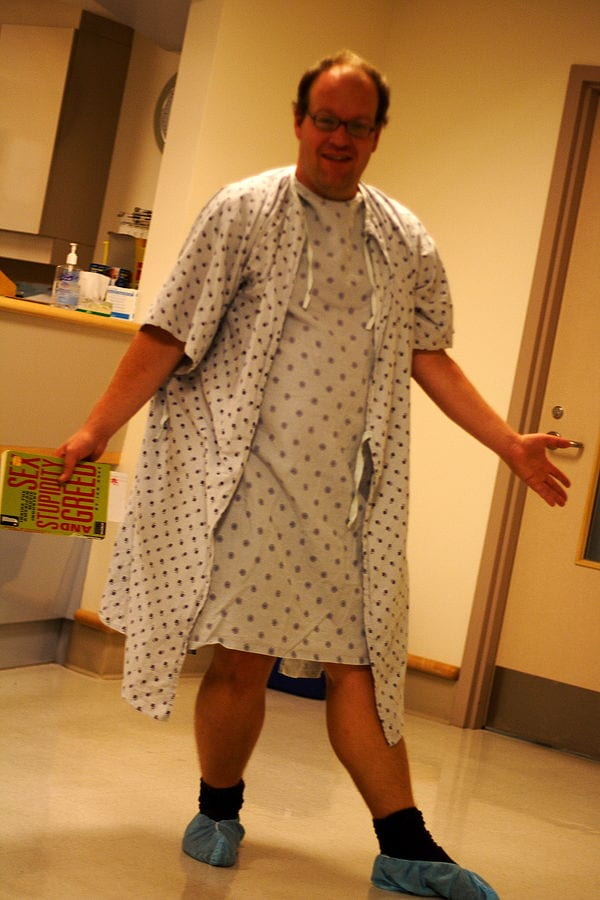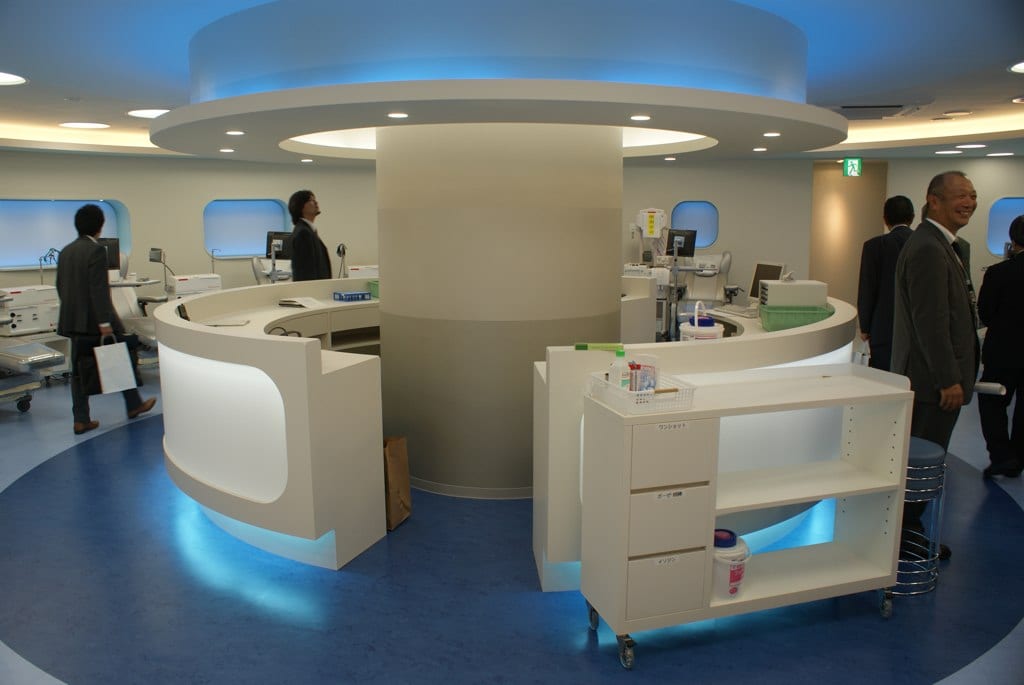
How to improve Customer Advocacy in healthcare
Patients will never stop being customers – even when they put on a hospital gown
Business processes have been used for a long time to model work as sets of repeatable value-creating activities that can be subject to improvement. Processes have been also looked at to see how they produce value for customers, but with a varying quality. Best practice theory typically identifies and removes assignable causes of variation, resulting in greater predictability, and reduces complexity, defect and exception.
Which all sounds fine, but critics of these approaches point out that many of the techniques use voice of the customer techniques but do not unpack the requirements in sufficient depth and the internal process focus means the customer agenda is not always centre stage. Irrespective of your views on inside-out versus outside-in approaches, process-driven change is critically important – particularly to industries where a structured approach closer to that seen on a production line is often required.
Clinical processes
When we speak about clinical processes, Donabedian, a physician and founder of the study of quality in health care and medical outcomes research, was an early proponent of precisely this type of thinking in healthcare. He identified the importance of looking at the organisational structure and the processes involved in producing outcomes for the patients. Yet all these processes (and many more) were based on a pure clinical outcome and little more. This was an accepted approach when it came to healthcare in the late 20th century, however when reviewing 21st century standards in comparison with other industries, clinical processes alone are not enough to make patients happy, satisfied and loyal to a hospital or a healthcare organisation.
As with many other industries, customer expectation in healthcare has changed. For example, expectations of speed have accelerated. Your patients are not as patient as they used to be. They are not prepared to wait and as a result, designing processes that integrate the clinical aspect with a proper service delivery aspect has changed the whole definition of the service environment.
Customer loyalty should be the ultimate objective and priority in industries where consumers have lots of choices. The healthcare industry is close to the top of this list particularly in a world where privatisation and free choice is becoming the norm rather than the exception. Some will debate this because patients who need medical treatment are not traditionally granted much choice. They need treatment which is dictated by their doctors, and even these options may be limited by their insurance programs, geographic locations, or access to more widely skilled resources.
However, despite this, customer loyalty is already extremely important in healthcare organisations, and will become the single most important defining differentiator in the next few years.
Next – or even at the same degree of importance – is advocacy. In a world of extremely rapid development and global spread of data and news through multiple social channels, the term “word-of-mouth” is becoming an integral part of many businesses’ strategies and visions.
In healthcare, word-of-mouth (WOM) strongly affects the customer beliefs and behaviour but today a research gap exists in the analysis of the current state of WOM research in health care. Only a few studies have been done which highlight that the factors which are favourable to WOM and might be influenced by service providers and payers. Even fewer studies concerned the spread and impact of this dimension.
Why is this important?
Some of the reasons customer advocacy are:
- Most patients are now aware they have a choice and demand it as a right. Despite some patients being limited by factors beyond their control, most patients have a choice in the healthcare providers especially in regard to Elective procedures (around 63% of visits). They will gladly drive out of town to find a better outcome or experience, if they believe justified.
- Better customer experiences make everyone’s job easier. Customer satisfaction and loyalty leads to happier and therefore more accommodating patients. Bad news is easier to deliver, mix-ups and errors easier to understand, and a smoother more predictable experience for the healthcare organization overall.
- Higher loyalty results in more referrals. We term this “Advocacy”. When a patient has a good experience, he/she is going to talk about it. They will tell their friends and family and they may tell everybody they are connected to on social channels. Not that many years ago we might have only told ten or twenty people – now we can tell millions at the touch of a button. These word-of-mouth referrals means more patients and a bigger impact on the community with all of the resulting revenue implications.
Does it look complicated? The good news is it’s not really. However, it is basically the time for the healthcare industry to raise the bar—and get a move on. As a quick win, healthcare industry leaders (including management, doctors, staff, etc.) must realise and work on the following:
Patients will never stop being customers when they put on a hospital gown
The biggest obstacle to improving customer service in healthcare is the industry’s insular nature and the way this makes its problems self-reinforcing. In other words, healthcare providers and institutions compare themselves to each other – to the hospital in the next town, the surgeon in the next O.R. – and benchmark their customer service accordingly. And to do so is to set the bar too low.
It’s not as if patients stop being consumers – customers – when they put on a hospital gown. And it’s not as if their loved ones surrender their identities as businesspeople, twitters, Facebook users, either, when they enter your institution. So, it’s time to benchmark healthcare customer service against the best in service-intensive industries because that’s what your patients and their loved ones will do.
Every patient’s interaction with healthcare is judged based on expectations set by the best players in hospitality industry, the financial services industry, and other areas where expert players have made a science of customer service.
First things first: fix your hellos and your goodbyes
Psychological research, most notably by memory researcher Elizabeth Loftus, has proven that the first and last items in any list are by far the next most easily remembered. In customer service, the same principle holds true: outside of the peak aspect of the overall experience, the first and last moments of a customer interaction are two of the top three memories a customer is likely to hold as the permanent “snapshot” of the whole event.
It is very hard to recover the goodwill of a patient whose first impression is a front-desk staff member’s irritation at being “interrupted”– even for that tell-tale half-second, or spending a long, tense time finding a parking space (and when she does, the space she finds is a six-minute walk to the front door – on crutches) or simply that signage in the building that is confusing (once she finally does manage to hobble the six minutes to the front door). First impressions always matter, and they are not often particularly complicated to make consistently good.
As for goodbyes, these need to be even better. Is it really showing sympathy to the patients? Did it really reflect how caring is your staff to the patient? Was it clear about the follow-up visits? Is there any misunderstanding when it comes to what to do next? Hospital visits are often a very stressful times for patients and even when they leave the level of concern for well-being is often high. The goodbyes give an opportunity to show you really care so if there is a reason to visit again your hospital will be an obvious first choice. Again, this may appear obvious – but in our busy complex world these small but critically important gestures are often ignored to the detriment of patient and care provider alike.
Everyone on your team needs to know how to apologize; literally EVERYONE
Resolving patient issues means knowing how to apologize for service lapses pointed out by a patient. It means getting rid of the defensiveness (or, worse: apathy) that tends to mar the reputation od the healthcare industry when confronted by a patient upset with what she perceives to be a service gaffe. Instead, take your patient’s side in these situations, immediately and with empathy, regardless of what your view of their world. Further, spread this attitude throughout your staff through role-playing and other training re-enforcement, so it will serve you fully every time a patient “throws a few things at the fan”. This should start with the physicians. Doctors do usually have a feeling of “No mistake”; yet people really like those who admits their mistakes, speak to them in their regular “layman” language and really listen to them and respond accordingly; an expression which is known as a “Patient-centred approach”.
Identify each employee’s purpose in the organisation – as opposed to one’s mere job function.
A particularly crucial aspect of great patient service is ensuring that every employee – from orientation onward – understands his/her particular underlying purpose in your organization and appreciates its importance. An employee has both a function – day-to-day job responsibilities – and a purpose – the reason why the job exists. (For example, ‘‘To create successful medical outcomes and hospitable human experiences for our patients” is a purpose; “To change linens” is a function. A properly trained and managed employee will know to – and will be empowered to – stop changing linens if creating successful medical outcomes or being hospitable require a different action at the moment. And afterward, she will be celebrated for doing so, not scolded for being a few short in the number of linens changed.)
In the next article, I will be taking you through the methodology and strategies needed to have these outcomes in place. It’s about changing the mind-set by simply moving to the other side of the table and looking at it from the patient’ perspective. Simple strategies but very powerful outcomes.
About Author:
Haytham Soliman is a GMC registered orthopaedics surgeon with more than 10 years of clinical experience, trained in Orthopaedics Surgery with special interest in Sports Medicine. He is an advocate of applying quality control measures, evidence-based medicine and updated clinical research in his practice. He also has 8 years’ business and managerial experience with Bupa Arabia as a Customer Experience Excellence Leader. His expertise includes project management, cost containment strategies, strategic partners’ relations and customer experience excellence protocols. An ex-professional athlete, he has a passion for sports and is currently participating in amateur level triathlon competitions.






Many thanks Haytham for a great article. Emotions play such a pivotal role in shaping our experiences and their influence is amplified in Healthcare where they are heightened, often negative (at least to begin with) and shared across several people (the patient and family). As Daniel Kahneman points out in his TedTalk ‘The riddle of experience vs memory’, our recollection of an experience is highly influenced by its latter stages, rather than equally weighted across the entire visit. Optimising the experience with an eye on emotions supported by opportunities to sequence those emotions could yield a much improved experience for patients and significant loyalty and advocacy results for providers.
You are absolutely right Elaine. Emotions play a major part of the experience especially when comes to visit doctors or hospitals. The unique thing about Cx in healthcare is that it is not only affecting the customer (patient) but all his surroundings i.e. family, friends, etc. It is becoming empirical for all healthcare providers to keep this in mind if they really want to have a positive impact on their ROI. The competition is becoming huge …. Customer Experience (in all industries and especially in healthcare) is really the best future invest to maintain business continuity, ensure loyalty and promote for advocacy.